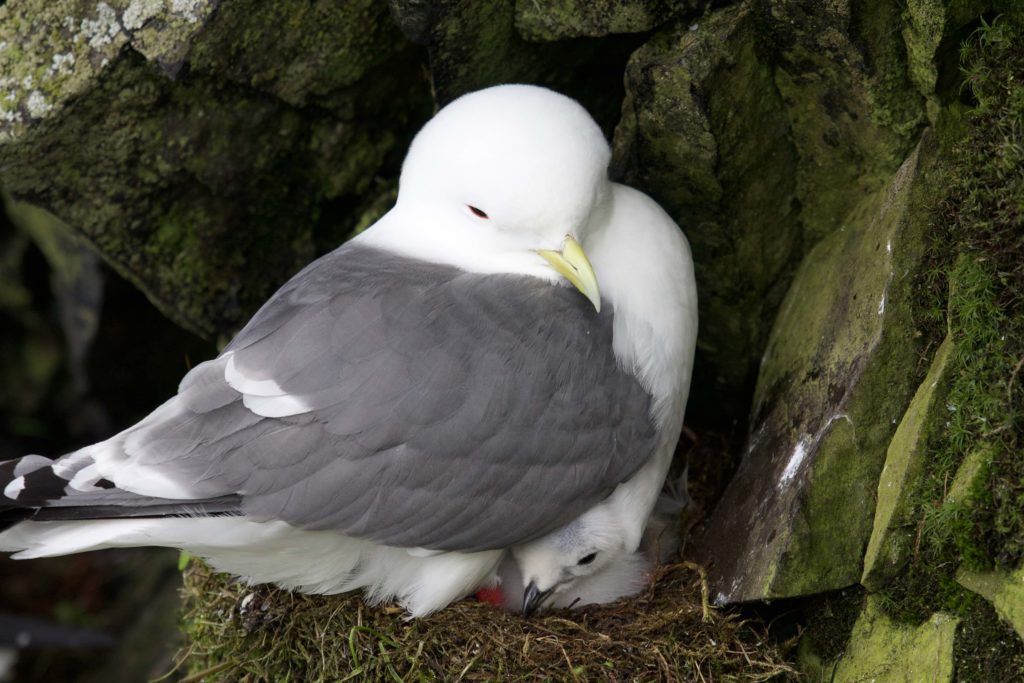Background
Although seabirds spend most of their life out at sea, all seabirds return to land to lay their eggs and raise their chicks. Breeding sites are usually on islands, and often fairly remote.The Alaska Maritime National Wildlife Refuge
Alaska is a very important place for breeding seabirds, and the Alaska Maritime National Wildlife Refuge (AMNWR) covers a huge area that includes many seabird colonies. Biologists visit 8 seabird colonies in AMNWR every year (and many others irregularly) to collect long-term information on how well the different seabird species are doing during the breeding season.
Productivity
Biologists spend hours and hours (often bundled up in fleece thermals and raingear) observing seabirds to answer some basic questions: How many eggs are laid? How many chicks hatched, and how many of these chicks successfully leave the nest (fledge)?
Known nests are checked every 3 days throughout the three-month breeding season, and their contents recorded (number of eggs or chicks). The average number of chicks that are successfully fledged from a nest site is called Productivity.

Red-legged Kittiwake and chick. Photo by Abram Fleishman
What it all boils down to?
At the end of the breeding season, biologists return to their office and work on summarizing all these days of information into just a few numbers that tell us how well the birds did at breeding that year.
Numbers are great, but for most people—we just want to know whether the birds had a good or bad breeding season.
Staff at AMNWR have come up with a great way of sharing these important data in a simple format: A Seabird Report Card that shows the productivity of different species at the different colonies.
Download the Seabird Report Card pdf
Happy Egg Faces represent productivity that is way above average, and a Broken Egg Face represents a complete breeding failure at that colony. At a glance, you can see which species and colonies did better in 2018. You’ll see that not all species are present (or studied) at all locations.
Although these egg faces are both cute and simple, they are based on statistics from data collected over many years. This level of accuracy is vital for interpreting what the data are telling us, and for comparing Egg Faces both among sites and years.
How does the 2018 breeding season compare to 2017?
Why is all this important?
Information on seabird breeding can tell us a lot about what is going on in the ocean. Seabird parents rely on the ocean for food, and will successfully rear chicks (have high productivity) if there is a lot of food available around the breeding colony. Sometimes low productivity may also be the result of parents arriving back at the breeding colony in poor condition due to a tough winter.
Seabirds are long-lived; some species may live as long as 60 years! One year of breeding failure in long-lived species is not generally a cause for alarm, because they have many years to successfully rear chicks. However, data collected over many years are important to determine whether a bad year is part of a trend of many poor years of breeding, a pattern that could indicate larger changes in the marine environment.

